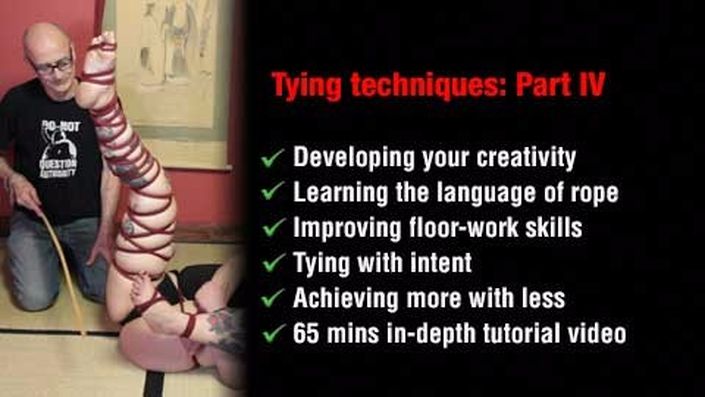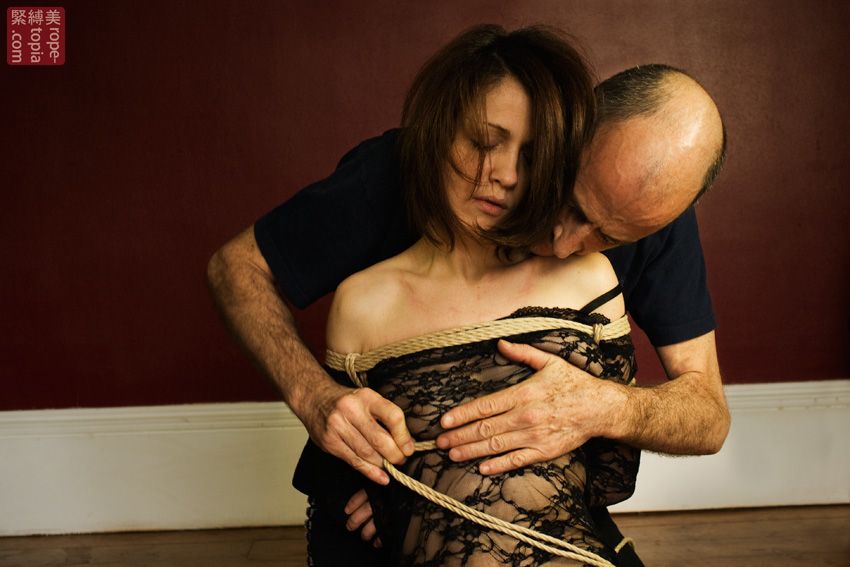
Tying techniques: Part IV (con subtítulos en español)
Becoming fluent in the language of shibari
In the fourth part of 'Tying techniques', we will develop the skills and discover how to use the 'ingredients' from the preceding classes. You will learn how to produce your desired results, by using them coherently according to the situation and with fluidity. Rope is a language so, to communicate effectively, fluency and nuance is essential.
In this class, you will move from the constraints of set ties towards creativity or, to put it another way, 'joined-up tying'. In linguistic terms, graduating from stumbling through a phrase book to being able to express yourself fully.
In the demonstrations, you will see how kinbaku is more about 'kokoro' (heart/passion) than a specific way of tying and, even, that it does it have to be limited to rope. We'll explore not only the use of various type of rope from nice to nasty but also show you what alternatives can be used and those to avoid.
To make this more accessible and to give you some ideas, I'm tying to chairs, rather than any fancy kit, to illustrate how to achieve your intent. Simple variations will help you understand how intent will determine how you tie, whether your purpose be exposure, sex, SM, access or interrogation. Intent is important since you need to know where you are going in order to find the best route or even get there at all.
As our model, Sophie, is quite masochistic, you will pick up quite a lot of semenawa (SM rope) techniques, a couple of which I learned from Kinoko Hajime and Kazami Ranki. That said, you'll also find a lot of the softer side.
You'll be surprised how much you can do with a few wraps, single and double-column ties and some basic frictions. Even more opportunities are afforded if you can throw in simple floor-based suspension. Don't worry if you haven't got a suspension point as I show you a safe way to improvise for around $10.
Take the next step in becoming fluent in rope.
Your Instructor

Esinem is a shibari artist who has regularly appeared at UK and international events such as Pride, Torture Garden, Erotica, Rubber Ball, Wasteland, Boundcon, Nuit Demonia and recently represented the UK at Japan's first international kinbaku event, Toubaku. He is also known for his teaching both in the UK and internationally and was co-organiser of the London Festival of the Art of Japanese Bondage and BOUND, Europe's premier monthly shibari event.
Over the last few years, he has been improving his skills in Japan with the help some of their best known and respected kinbakushi, Arisue Go, Osada Steve, Kinoko Hajime, Kazami Ranki and, grand master of newaza, Yukimura Haruki. Whilst drawing from classical methods, his style is distinctive and epitomizes the art of communicating with rope, often departing from the typical serenity of shibari shows and flying in the face of tradition to produce some striking and unusual performances.
In addition, he has worked on various videos, e.g. Primal Scream's 2013, artistic collaborations and photo shoots both on and off camera. He has been involved in projects providing inspiration for Tom Ford's 2013 collection and, Raqib Shaw, an acclaimed artist who has exhibited at the Tate, Metropolitan and White Cube galleries.
He contributed to Rope, Bondage & Power, edited by Lee Harrington and is currently involved with a number of documentaries on kinbaku. He is also author of the first English language tutorial DVDs: 'Japanese Rope Bondage: Tying people, not parcels'.
Nina Russ is a London based, shibari performer, rope artist and educator. She became student of Esinem in 2011 and their collaboration gave birth to BOUND shibari night (2012) and ShibariClasses (2015). She had also the fortune to participate at workshops with different Japanese shibari masters, like: Kazami Ranki, Yukimura Haruki, Kinoko Hajime.
She has performed internationally, most notably at the London Festival of the Art of Japanese Rope Bondage and RopeFest in St.Petersburg. In addition, she participates in numerous artistic, fashion collaborations and local performances. Her passion for rope has lead her on a route of discovery of concepts, philosophy, aesthetics and benefits behind this Japanese discipline.
She sees shibari as an art form which creates deep connection between the participants and also aids personal development. Due to its martial arts roots, it brings self-discipline, efficiency, effectiveness and, thus, growth in confidence and awareness. She believes these skills allow a greater focus on the most important aspects: you, your partner and your shared experience.
